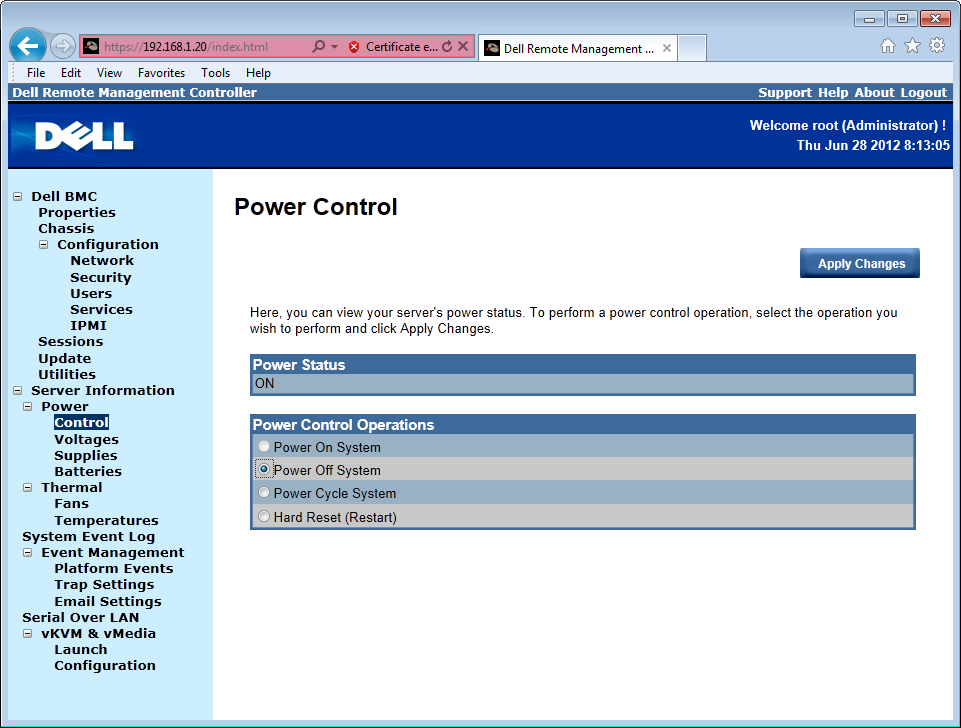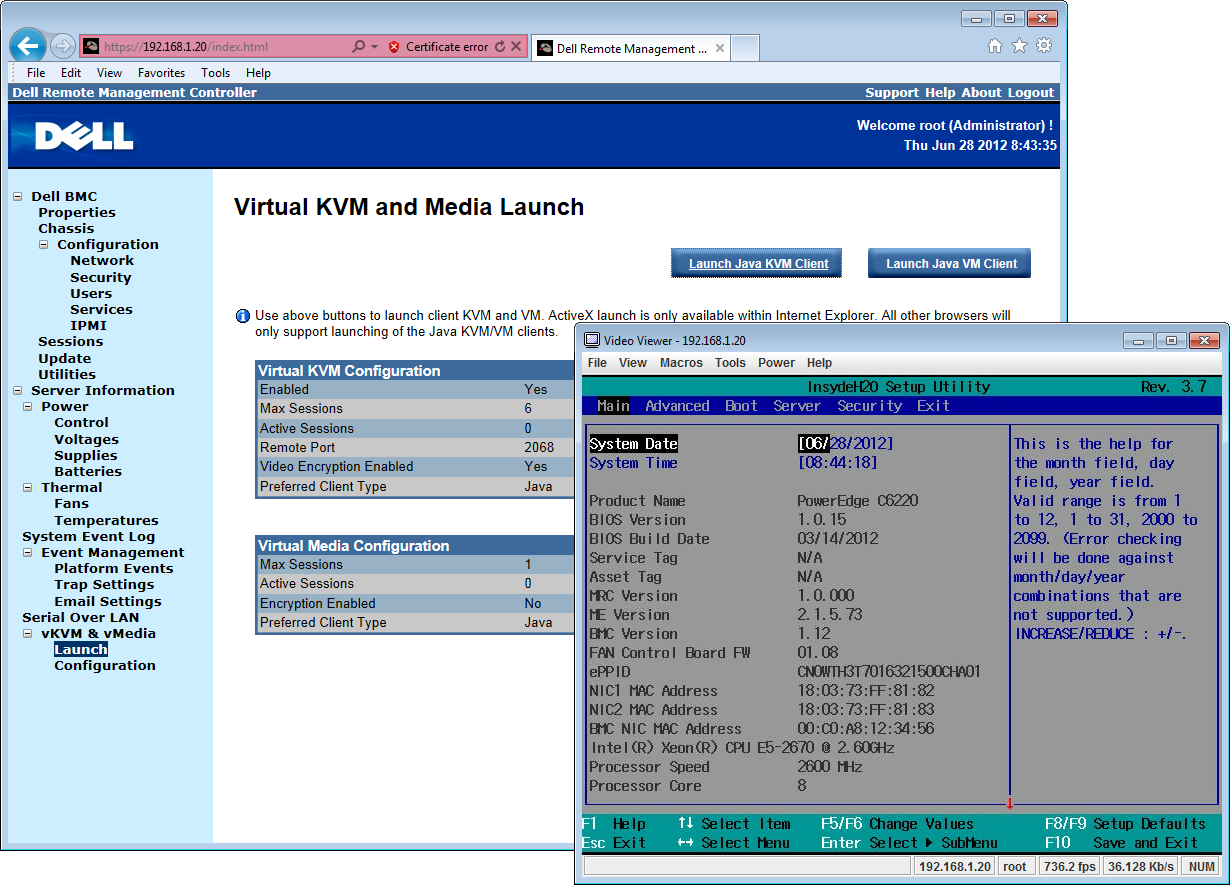Dell PowerEdge C6220 review
Dell’s cloud server squeezes four Xeon E5-2600 systems into 2U of rack space. Dave Mitchell finds out if the PowerEdge C6220 can be used as a high density alternative to individual blade servers.
The C6220 offers a high density rack with plenty of E5-2600 Xeon muscle under the covers. It comes with impressive power to processing ratio, but is not much cheaper than a set of standard 1U rack servers. Remote management features and build quality are also basic, which makes it hard to recommend.

Expansion and storage potential
Each node has a single X16 PCI-e Gen3 slot supporting a half-height, half-length card. If you want more, the dual height nodes provide two X16 PCI-e Gen3 slots and have room for full-length cards.
Basic storage options are provided by the motherboard's Intel C602J chipset which offers six 3Gb/sec SATA II ports and supports mirrors, stripes and RAID-5 arrays. Dell has an optional LSI 9265-8i PCI-e card which adds SAS to the mix.
Each node has a mezzanine card connector as well. Dell offers an LSI 2008 SAS card plus Gigabit and 10-Gigabit options but bear in mind this slot is only active in dual CPU configurations.
The chassis has room up front for up to twelve hot-swap LFF hard disks. The backplane is split vertically into four groups so each node has three dedicated drive bays assigned to it.
Dell offers a chassis version with 24 SFF bays so each node can have six drives. A new feature of this model is an expander backplane option that allows any number drives to be assigned to specific nodes regardless of their physical location.

No power usage monitoring but remote management provides power controls for each node
Low power usage
The chassis has room for a pair of hot-plug power supplies and our system had two 1200W modules. Dell also offers a 1400W option for heavier workloads.
To test power consumption, we hooked the C6220 up to our inline power meter. With each node loaded with Windows Server 2008 R2 and idling along we saw first, second, third and fourth nodes draw a total of 135W, 200W, 290W and 350W, respectively.
Using the Sisoft Sandra benchmarking app to push the CPUs to maximum load on each node we saw power peak at 364W, 671W, 945W and 1242W. Dell estimates the C6220 will save you around 100W of power over four servers.
In our review Boston Value Series 380 G8 which has the same CPUs and memory configuration, we saw it pull 162W in idle and 349W under extreme load. An average peak of 310W per node for the C6220 shows power savings can be made.
The C6220 is reasonably well constructed but not to the same level as Dell's standard PowerEdge servers. All cooling is handled by four fans behind the disk backplane but these are not hot-swappable and don't have integral power connectors.

Node remote control and virtual media services come as standard and not as optional upgrades
Get the ITPro daily newsletter
Sign up today and you will receive a free copy of our Future Focus 2025 report - the leading guidance on AI, cybersecurity and other IT challenges as per 700+ senior executives
Dave is an IT consultant and freelance journalist specialising in hands-on reviews of computer networking products covering all market sectors from small businesses to enterprises. Founder of Binary Testing Ltd – the UK’s premier independent network testing laboratory - Dave has over 45 years of experience in the IT industry.
Dave has produced many thousands of in-depth business networking product reviews from his lab which have been reproduced globally. Writing for ITPro and its sister title, PC Pro, he covers all areas of business IT infrastructure, including servers, storage, network security, data protection, cloud, infrastructure and services.
-
 Cleo attack victim list grows as Hertz confirms customer data stolen – and security experts say it won't be the last
Cleo attack victim list grows as Hertz confirms customer data stolen – and security experts say it won't be the lastNews Hertz has confirmed it suffered a data breach as a result of the Cleo zero-day vulnerability in late 2024, with the car rental giant warning that customer data was stolen.
By Ross Kelly Published
-
 Women show more team spirit when it comes to cybersecurity, yet they're still missing out on opportunities
Women show more team spirit when it comes to cybersecurity, yet they're still missing out on opportunitiesNews While they're more likely to believe that responsibility should be shared, women are less likely to get the necessary training
By Emma Woollacott Published
-
 OpenAI wants developers using its new GPT-4.1 models – but how do they compare to Claude and Gemini on coding tasks?
OpenAI wants developers using its new GPT-4.1 models – but how do they compare to Claude and Gemini on coding tasks?News OpenAI says its GPT-4.1 model family offers sizable improvements for coding, but tests show competitors still outperform it in key areas.
By Ross Kelly Published